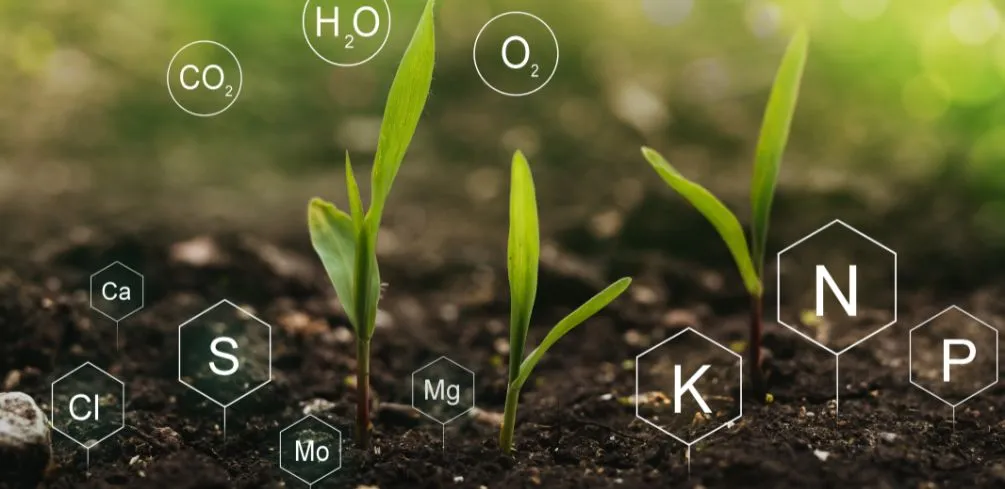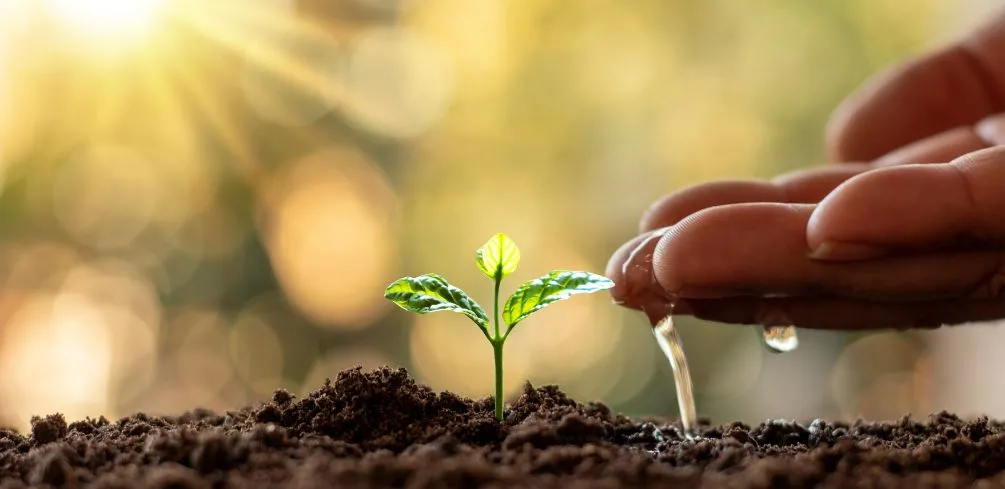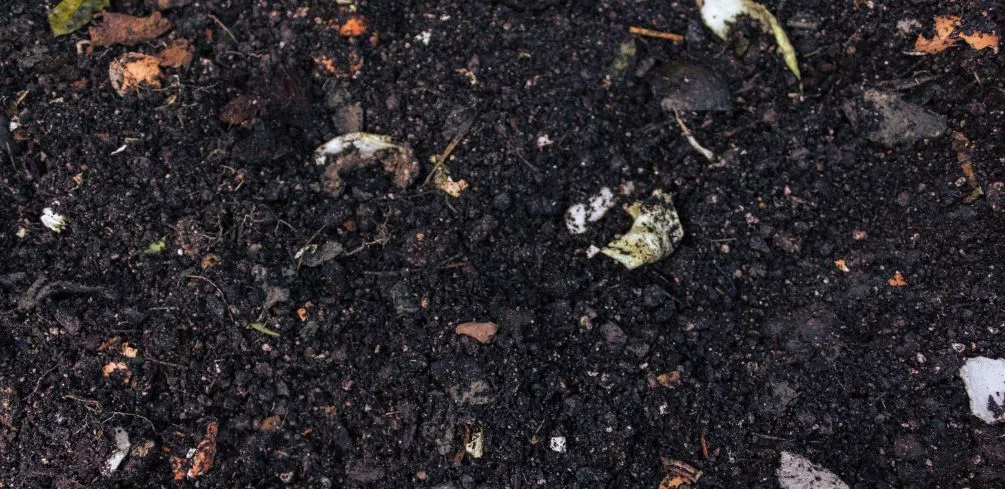Healthy soil is the foundation for successful agriculture, and it plays a critical role in supporting the growth of healthy crops. In recent years, there has been a growing interest in understanding the components of healthy soil and how we can improve its quality to support sustainable agriculture.
The components of healthy soil are complex and interdependent, and they interact in intricate ways to support plant growth. A healthy soil is one that is rich in nutrients, organic matter, microorganisms, and minerals.
Understanding these components and how they work together can help farmers develop strategies to improve the quality of their soil, increase crop yields, and promote long-term sustainability. In this article, we will explore the key components of healthy soil and their importance for successful agriculture.
Nutrient-Rich Soil
Soil is the foundation of all terrestrial life on Earth. It is a living, dynamic, and complex ecosystem that requires a delicate balance of physical, chemical, and biological properties to function properly.
A healthy soil system can be compared to a well-oiled machine, with each component working in harmony with one another to produce nutrient-rich soil that supports plant growth.
The key to achieving this balance lies in the process of nutrient cycling, which involves the movement of nutrients through various stages of decomposition and transformation by soil microorganisms. One way to promote nutrient cycling in the soil is through composting.
Composting benefits the soil system by providing organic matter that feeds soil microorganisms, which then break down the material into nutrients that are readily available for plants to use.
As a result, composting helps to improve soil structure, increase water-holding capacity and reduce erosion. In addition, composting also helps to sequester carbon from the atmosphere back into the soil, thereby mitigating climate change.
By incorporating these practices into our agricultural systems, we can create healthy soils that support sustainable food production systems for generations to come.
Organic Matter And Microorganisms
Organic Matter and Microorganisms play a significant role in promoting healthy soil.
Organic matter is the decaying material from plants and animals that provide nutrients to the soil. When added to the soil, organic matter increases water retention, improves soil structure, and enhances microbial activity. The benefits of composting are well documented as it is an excellent technique for incorporating organic matter into the soil.
Composting is a natural process that breaks down organic waste materials into nutrient-rich humus that can be added back into the soil. The addition of compost to the soil not only helps retain moisture but also increases nutrient availability.
Techniques for promoting soil biodiversity involve creating an environment where microorganisms can thrive. One way this can be achieved is by reducing tillage, which disrupts the habitat of beneficial organisms in the soil. Another method is by rotating crops, which promotes diverse microbial populations in the soil while also preventing disease buildup in specific plant species.
Additionally, using cover crops provides a living root system in the soil throughout the year, which creates a conducive environment for microorganisms to thrive.
Incorporating organic matter and promoting biodiversity in the soil has numerous benefits, such as improving crop yields and quality, reducing erosion, conserving water resources, and controlling pests naturally. As such, these techniques should be incorporated into farming practices to promote healthy soils that support sustainable agriculture without compromising future generations’ needs.
Minerals In Healthy Soil
Moving on from the previous section, we can say that organic matter and microorganisms are crucial components for maintaining healthy soil. They provide nutrients, improve soil structure, and enhance water-holding capacity.
However, soil composition comprises more than just these factors. Minerals also play a vital role in sustaining healthy soil. Minerals in healthy soil come from various sources, including rocks and minerals found beneath the earth’s surface. These minerals are gradually released into the soil through natural processes such as weathering and erosion.
Mineral extraction techniques have been developed to access these minerals more efficiently. These techniques include mining and quarrying, which involve removing large amounts of rock from the earth’s surface to extract valuable minerals.
While these methods have enabled humans to access important mineral resources required for various applications, they can also cause significant damage to ecosystems if not managed sustainably.
Therefore, it is essential to strike a balance between mineral extraction and environmental conservation when accessing resources for maintaining healthy soil composition.
Interactions Between Soil Components
The components of healthy soil interact with each other in complex ways that influence the overall health of the soil.
One important factor is soil particle size, which affects water and nutrient retention. Soils with smaller particles have a greater surface area, which allows them to hold more nutrients and water than soils with larger particles. However, these soils can also become compacted more easily, reducing the amount of air and water available for plants.
Another important interaction is between soil pH and nutrient availability. Soil pH affects the solubility of nutrients, making some more available to plants than others. For example, at low pH levels (acidic soils), aluminum and manganese become more soluble and can be toxic to plants. At high pH levels (alkaline soils), iron, zinc, and phosphorus become less available.
Understanding these interactions is crucial for managing soil fertility and ensuring healthy plant growth.
In summary, healthy soil is made up of a complex system of interacting components that influence plant growth. Soil particle size affects water and nutrient retention, while soil pH affects nutrient availability. By understanding these interactions, farmers and gardeners can manage their soil fertility effectively to promote healthy plant growth.
Strategies For Sustainable Agriculture
Maintaining healthy soil is crucial to achieving sustainable agriculture. One way of doing this is through crop rotation, which involves planting different crops in a particular area over time to help maintain soil fertility and productivity.
Crop rotation can help reduce the risk of pests and diseases that may build up when the same crop is grown repeatedly in the same area. Additionally, it can help improve soil structure and reduce erosion by providing continuous ground cover.
Another strategy that farmers can use to maintain healthy soil is through planting cover crops. Cover crops are non-commercial plants that are grown specifically to protect and enrich the soil. They are typically planted during fallow periods or during winter months to help prevent soil erosion, suppress weed growth, and improve soil quality.
Cover crops also play a vital role in nitrogen fixation as they take up excess nitrogen from the air and transfer it back into the soil, where it can be utilized by other plants. By incorporating crop rotation and cover cropping strategies into their farming practices, farmers can ensure sustainable agriculture while maintaining healthy soils for future generations.
Frequently Asked Questions
How Do Different Types Of Soil Affect Plant Growth?
Soil composition and nutrient availability are crucial factors that affect plant growth. Different types of soil can have varying compositions, including sand, silt, and clay, which can impact the amount of nutrients available for plants.
Sandy soils have larger particles and lower nutrient-holding capacity than clay soils, which hold more nutrients due to their smaller particle size. Moreover, the pH level of soil also plays a vital role in determining nutrient availability for plants.
Alkaline soils may hinder the uptake of iron by plants, while acidic soils may limit the availability of phosphorus. Therefore, understanding the composition of different types of soil is essential in determining how it affects plant growth and its ability to provide necessary nutrients for healthy plant development.
Can Soil Health Be Improved Without Using Synthetic Fertilizers?
Organic alternatives and composting methods are increasingly being used to improve soil health without relying on synthetic fertilizers.
Composting, for example, can be likened to a healthy diet for the soil. Just as a diverse and balanced diet can improve human health, adding a variety of organic materials to the soil through composting can lead to improved soil structure, increased nutrient availability, and enhanced microbial activity.
Additionally, organic alternatives such as cover crops and crop rotation can help prevent soil erosion and promote biodiversity. By adopting these methods, farmers and gardeners can not only improve the health of their soil but also reduce their reliance on costly and potentially harmful synthetic fertilizers.
What Impact Does Soil Erosion Have On Soil Health?
Preventing erosion is crucial to maintaining healthy soil. Soil erosion can have a significant impact on the structure of the soil, leading to decreased fertility and potential loss of topsoil.
Erosion can be caused by natural factors such as wind or water, but human activities like tilling and overgrazing can also contribute to erosion. Implementing practices such as no-till farming and cover cropping can help prevent erosion and improve soil health.
By protecting the structure of the soil, we can ensure that it remains fertile and able to support healthy plant growth for years to come.
How Does Climate Change Affect Soil Health?
Climate change can have a significant impact on soil health by altering the soil composition and microbial activity. Rising temperatures, increased droughts, and unpredictable precipitation patterns can lead to decreased soil moisture content and nutrient availability, resulting in reduced plant growth and yield.
Additionally, extreme weather events such as floods or heavy rainfall can cause soil erosion and loss of topsoil, further degrading the overall soil quality.
These changes can also affect the microbial communities that live within the soil, disrupting their balance and function in nutrient cycling and disease suppression.
Overall, climate change poses a significant challenge to maintaining healthy soils necessary for sustainable agriculture and ecosystem health.
What Role Do Soil-Dwelling Organisms Play In Maintaining Healthy Soil?
As we delve into the topic of soil health, it is impossible to ignore the critical role that insects and other soil-dwelling organisms play in maintaining a healthy ecosystem.
Insect diversity and nutrient cycling are two key factors that contribute to the overall health of the soil. Insects such as earthworms, beetles, and ants help to break down organic matter, improve soil structure, and increase nutrient availability through their waste products.
Additionally, microorganisms like bacteria and fungi assist in breaking down complex compounds into simpler forms that can be absorbed by plants.
Understanding the intricate relationships between these organisms and their environment is crucial for promoting healthy soil ecosystems, which ultimately support plant growth and human well-being.
Conclusion
Different types of soil can greatly affect plant growth, and healthy soil is crucial for successful crop production. Understanding the components of healthy soil is essential for farmers and gardeners alike.
Soil health can be improved without using synthetic fertilizers by implementing techniques such as cover cropping, crop rotation, and composting. Soil erosion has a negative impact on soil health, leading to decreased nutrient content and reduced water-holding capacity.
Climate change also poses a threat to soil health, as extreme weather events such as droughts and floods can disrupt the delicate balance of nutrients in the soil. Insects and other soil-dwelling organisms play a vital role in maintaining healthy soil through processes such as decomposition and nutrient cycling.
Therefore, it is crucial to protect and promote biodiversity in agricultural systems. In conclusion, understanding the components of healthy soil is crucial for successful crop production. Techniques such as cover cropping, crop rotation, and composting can improve soil health without relying on synthetic fertilizers.
Soil erosion and climate change pose threats to soil health that must be addressed through sustainable agricultural practices that promote biodiversity. By prioritizing the health of our soils, we can ensure a sustainable food system for future generations.











